Teaching the Halakhic Sections of the Torah

Zvi Grumet is Director of Education at The Lookstein Center and Editor-in-Chief of Jewish Educational Leadership. Rabbi Dr. Grumet has been teaching Tanakh to teens and adults for more than forty years. He has published dozens of articles on education and Tanakh and numerous books including Lev Lada’at (Koren), a five-volume educational commentary on the Torah. His latest book is Exodus: The Genesis of God’s People (Maggid, 2025).
Much of the discussions we find about teaching Humash focus on the narrative portions—Genesis, the story of the Exodus, the wanderings in the wilderness. To a large extent that makes sense, as they provide students with their origin stories—so critical for building the foundations of identity—and are inherently interesting, as stories tend to be. That being said, there is another half of the Torah, whose nature is primarily legal. While some skip it intentionally or somehow “don’t get around to it,” for others it is no less important to teach, even though the content often doesn’t lend itself easily to grab and hold the students’ attention.
As with any teaching, we must first identify what we want to achieve before we can think about how we want to do it. There was discussion about this in mid-20th century Israel, where a variety of writers wrote primarily about the importance of teaching halakha, including developing a commitment to its observance. Others wrote of the importance of demonstrating the seamless bond between the Oral and the Written Torah. The halakhically oriented tended to favor learning those portions with the commentary of Rashi while the others leaned heavily on the writings of Malbim, R. Samson Raphael Hirsch, R. Yaakov Zvi Mecklenburg (HaKetav VehaKabalah), and R. Baruch Epstein (Torah Temimah). In North America today, community schools often skip the legal sections, and while Orthodox schools do learn them that learning tends to feel like a halakhic survey course, especially in the middle schools where they study the text with Rashi’s commentary.
All of these approaches encountered significant difficulties. Reading the Torah as a halakhic work requires a significant leap of faith, as the students often need to suspend their understanding of the words of the Torah in order to accept the halakhic interpretation. Using Rashi as a primary source is problematic in other ways, as his interpretation—as noted by Ramban (Exodus 12:9, 12:45, 20:3, and many other places)—is too frequently based on Talmudic opinions which were rejected. The approach that the Oral tradition replaces the plain reading of the text, as suggested by many of the 19th century authors cited above, left many students frustrated that the Torah did not say what they were supposed to believe it meant to say. All this was further challenged by the student experience of learning “dry” facts and memorizing interpretations of the words that did not seem, for them, to flow from the text. As for those schools that take the halakha-survey approach, students, and perhaps even their teachers, are challenged to understand why they were learning halakha in a Humash class rather than in a halakha class.
Mitzvot as narrative
In my teaching, I take an alternative to those approaches, one which is based on the presumption that distinguishing between the narrative and the halakhic portions of the Torah is artificial. What that means, in practice, is that I view the halakhic portions of the Torah as intended to complement the stories, amplify them, or highlight their message, so that these particular mitzvot are presented at this particular point in order to clarify or concretize the narrative or drive home a point.
That does not detract from the fact that tradition derives halakhot from them. Quite the contrary, the status of the halakhot learned stands on its own as part of the Oral tradition, and that Oral tradition has its own foundation of authority. But this does not replace the written text of the Torah and what it means when read at face value.
Here is one small example. In Exodus 13:9, after instructing the Israelites to teach the story of the Exodus to their children, Moses adds: “And it shall be for you a sign on your hand and a memory between your eyes.” Rabbinic tradition (recorded partially by Rashi) reads this as a source for the mitzvah of tefillin, but Rashbam understands this as a metaphor. Moses is telling the Israelites that the story of the Exodus should be as if it were engraved on the Israelites’ and should be carried with pride like a crown worn on the forehead. Rashbam does not deny that there is a mitzvah of tefillin, but insisting on reading the text as is, he believes that Moses is trying to emphasize the point that the underlying message of the commemorations of the Exodus is to be deeply seared into the consciousness of Israel as a source of pride. The text retains its plain meaning in context and amplifies the message which has been dominant ever since Benei Yisrael began preparing to leave Egypt, and this is something that the teacher and the students can do together in exploratory learning; the halakhot of tefillin will be learned in a halakha class.
Expanded example
Let us expand this idea to a broader text, the Decalogue (I hesitate calling it the Ten Commandments because it contains more than ten mitzvot, but there are ten easily identifiable statements). The halakha-oriented teacher will invest considerable time identifying each of the mitzvot included and exploring the details of each command or prohibition, beginning perhaps with Rashi’s commentary and perhaps probing further. When I teach this, I approach it as part of the broader narrative. Either I or the students will raise questions such as:
- Why does God choose these mitzvot to open His direct dialogue with Benei Yisrael? Are they more important than other mitzvot?
- In what way does the Decalogue connect to Benei Yisrael’s experience in Egypt, their experience emerging from Egypt, their ancestors, or the previous chapter (which introduces it)?
- In what way does this communication express the relationship God plans to have with Benei Yisrael or what kind of nation he hopes that will become?
- Is there a logical order to the statements in the Decalogue, and if so, what is that order trying to convey?
- Is there an internal structure in this list, and if so, what is it and what is that trying to convey?
- Is there a pattern? If so, does that pattern get broken? Is there a meaning to either the pattern or its interruption?
- Is there significance to the number ten (which is not highlighted here but is mentioned later (Exodus 34:28))?
With these and questions like them, the Decalogue becomes part of the story, and the students become part of the exploration of how it connects to the story of the Exodus or the post-Exodus and what it adds or clarifies. Here are some observations that students make (sometimes with a bit of guidance about what kinds of things to look for), which then become food for thought for putting the information together in ways that are meaningful.
- There are ten statements separated by parasha breaks in the Torah
- The first three statements are fairly lengthy, and include an explanation (introduced by the word ki) as to why they are to be observed—they seem to form a group
- There are five statements that are short, some no longer than two words—they seem to form a second group
- In between those two groups is a statement that is shorter than those in the first group and longer than those in the second—it has an explanation for why it should be observed but is missing the word ki, so it doesn’t seem to belong to either group
- The final statement seems to be an expansion of the previous one, raising the question of why both are necessary
- This is God’s first and only direct communication with Benei Yisrael
- God opens the Decalogue by introducing Himself, much like He when He first spoke with Moses and eerily similar to the way He introduced Himself to Abram in the Covenant Between the Pieces (Genesis 16:7)
- With a few exceptions, there seems to be considerable overlap between these statements and the mitzvot included in the seven Noahide mitzvot
Instead of a list of mitzvot to be analyzed for their halakhic content which interrupt the story, the Decalogue turns out to be a treasure trove yielding questions and observations that the teachers and students can work on together to begin to understand what makes this group special, why they are introduced at this juncture, and why they are organized this way.
Precedents for learning/teaching this way
This approach is not new; there are multiple examples of classic commentaries taking similar approaches. Ibn Ezra on Exodus 23:24 reflects on an even longer section of mitzvot, including most of Parashat Mishpatim, and identifies it as a single unit which he calls the Book of the Covenant, which is later mentioned explicitly in the Torah (Exodus 24:7). In doing so he connects the various mitzvot included into a coherent whole and looks at it with a perspective of why it is presented here and how it introduces the covenantal ceremony in the following chapter. Ramban (Exodus 25:1) does something similar, as he frames the entire, lengthy discussion of the mishkan—covering 7 chapters (!)—as the natural sequel to the Revelation at Sinai. That framing creates meaning for the mishkan and even for some of its details, which Ramban begins to do in his lengthy introductory comment. The learning of the mishkan thus becomes transformed from a burdensome busy-ness of dimensions and materials to an exploration of meaning—not only in the text but in students’ lives.
The bigger picture
When students learn that the mitzvot and the narratives don’t just co-exist side-by-side but actually meld into an integral whole, the learning becomes more coherent and the messages become clearer, enabling a deeper internalization of both. The study of the Decalogue and its structure reveals that the instruction to honor one’s parents is not only the connector between the two halves of the Decalogue but may even be its central core. The study of the mishkan will reveal that its core function is to serve as a symbol of the Israel-God relationship established at Sinai, even to the extent that it is to serve as a portable Sinai so the dialogue begun on the mountain can continue.
When studying this way students begin to see the Humash as an integral whole rather than as a collection of individual stories and assorted, interpolated mitzvot (or, as Rashi might suggest, a collection of mitzvot with interpolated stories). Even more, they can begin to extrapolate the approach to other mitzvot and seek the meaning of those in the context of the Torah and in the context of their own lives.
Could we ask for more?

Zvi Grumet is Director of Education at The Lookstein Center and Editor-in-Chief of Jewish Educational Leadership. Rabbi Dr. Grumet has been teaching Tanakh to teens and adults for more than forty years. He has published dozens of articles on education and Tanakh and numerous books including Lev Lada’at (Koren), a five-volume educational commentary on the Torah. His latest book is Exodus: The Genesis of God’s People (Maggid, 2025).

From The Editor: Winter 2025
It is one of the oldest literary collections ever written and still very much in circulation. Public readings (and celebrations) of its text are practiced in nearly every synagogue in the world in a regular, fixed cycle. It has been analyzed and studied by religious luminaries, academic scholars, and lay people, and has been studied and taught more times than we can count, with hundreds if not thousands of published commentaries. It plays a central role in all of our lives. One would think that by now we would have a pretty clear idea of what content from Tanakh should be taught and how it should be approached pedagogically at various age levels. And yet, a mountain of anecdotal evidence reveals that there is a huge range in what is taught, why it is taught, and how it is taught.

Tanakh Hats for Meaning Making: A Multi-Perspective Approach to Biblical Text Study
In our ongoing quest to enhance Tanakh education, we’ve developed a fresh approach that energizes both teachers and students while promoting diverse interpretations, critical thinking, and collaborative learning. Inspired by Edward de Bono’s Six Thinking Hats, this method encourages learners to view Tanakh texts from multiple perspectives, offering deeper understanding and fostering connections between foundational Jewish texts and modern life. The Tanakh Meaning Making Hats (TMM Hats) approach equips students with various interpretive tools to explore familiar perspectives and discover new ones, building understanding through both familiar and novel frameworks. This method, grounded in constructivist learning theory, enables students to construct knowledge actively, allowing them to examine texts from varied angles.

From Consumption to Production: Equipping Students to Create Torah
In the realm of Tanakh education, there is a tendency to focus on the consumption of Torah knowledge, where students engage in the study, understanding, and analysis of sacred texts. While amassing a critical base of knowledge is undeniably essential, I believe that shifting from students-as-consumers to students-as-producers—in which students not only absorb the teachings but also create and contribute their own interpretations and insights that can be shared publicly—is equally essential. How can we teach students to produce a deep analysis of Torah and not just consume others’ commentary? How do we encourage students to think for themselves while teaching other valuable lessons in the process?

Innovating Teaching Tanakh
What I observed one day in my visit to an English Language Arts (ELA) classroom last year opened my mind to completely new ways of teaching Tanakh, leading to greater student engagement.I work at a pluralistic elementary school that emphasizes growth mindset and continued development for each educator. One specific policy that helps educators learn from each other is the requirement to visit at least two other classrooms every semester. This routine fosters a genuine culture of professional growth, where teachers share ideas, observe varied teaching methods, and offer constructive feedback. I’ve always found these observations beneficial, but one visit left a lasting impact on my approach to teaching Tanakh. Stepping into Mrs. Michelle Petrova’s 6th grade ELA classroom, I was greeted with an incredibly vibrant atmosphere.
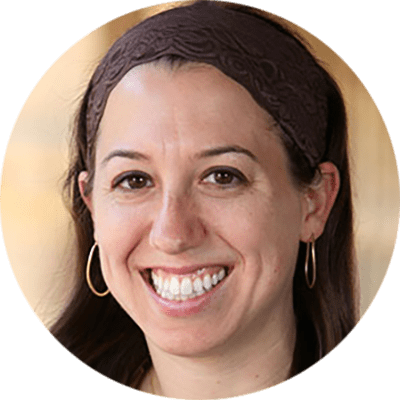
Teaching Tanakh: A New Perspective on Pedagogy
As many teachers of Tanakh know, the Tanakh classroom serves as a crucible for interpreting sacred texts, particularly in theologically and denominationally diverse day schools, camps, and beit midrash settings. The question I wish to explore here is: how do Jewish educators navigate the complex landscape of multiple orientations towards Tanakh that they might find in the seats of their classroom and make sure to empower all their students as interpreters? Central to my own Tanakh teaching, at almost every grade level, in almost every type of day school context, is the realization that my students don’t read Tanakh according to the same orientations or literacy practices, but it would be helpful if they did—at least for the duration of my class.
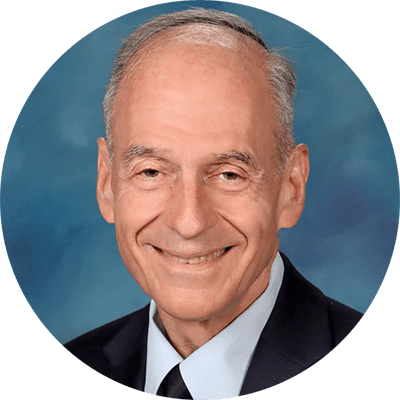
Tanakh Study and Reader Response
“My students insist on translating every pasuk (verse) into English and then using their translation to answer the questions. How can I get them to work from the makor (original text)?”“When I give in to their learned helplessness and teach them an interpretation, they can’t identify the problem in the pasuk that the interpretation comes to solve, and then they get stuck on the one understanding I presented and won’t consider an alternative. How can I help them think for themselves?” “I want my students to identify with the avot (patriarchs) and imahot (matriarchs) and learn from their example. But they somehow can’t relate to them as role models. What am I doing wrong?”Sound familiar? For years these complaints were a constant refrain from my Tanakh-teaching colleagues.
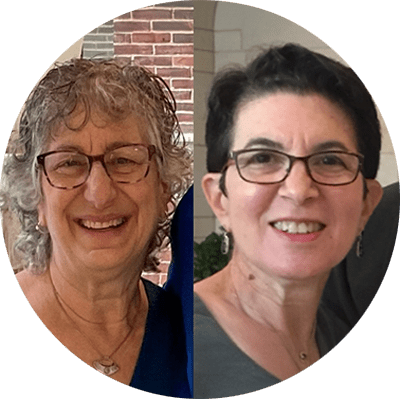
Vision, Lenses, and Focus: Bringing Clarity to Tanakh Curriculum with Standards
Any Tanakh text, whether narrative or legal, contains an abundance of ideas, elements, and complexities, and has the potential to raise countless questions. How does a school community decide which of them to pursue?Nechama Leibowitz, quoted by Shmuel Peerless in To Study and to Teach: The Methodology of Nechama Leibowitz, wrote that educators have……to decide what to leave out and what topics should not be touched, because it is pointless to tackle a number of different topics and problems superficially or incidentally in a chapter. It is preferable to concentrate on just a few topics, but in depth (p. 15). Standards serve as powerful tools for deliberating about a vision for Tanakh education and for shaping Tanakh curriculum once the school’s vision is clear.

Teaching Tanakh to Weaker Students
In my roles as a Tanakh teacher and an instructional coach, my goal is to inspire Tanakh students to become engaged, proud, and even passionate Jews, fluent in Jewish literacy and deeply committed to the future of Jewish education and community. This goal is daunting under the best of circumstances; when teaching Tanakh to weaker students, it becomes more so. In this article I will outline some of the most ubiquitous challenges that arise from teaching Tanakh to weaker students and offer suggestions for navigating them based on my own experience as well as conversations with other educators and research from the field. I believe that navigating these challenges requires both modifications in practice and shifts in mindset, and I will outline each of them.
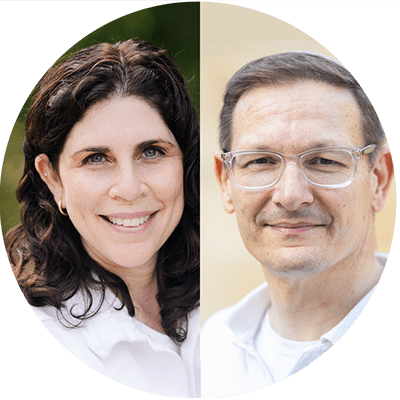
Student-Centered Learning in the Tanakh Classroom
For the past decade, educators have been using the term student-centered learning (SCL) but still finding it tricky and challenging to apply to the Tanakh classroom for a variety of reasons. One is the amount of time teachers must dedicate not only to teaching content but also to developing textual reading skills. Another is that teachers might feel reluctant to engage in a pedagogy they feel allows for too much free thinking and not enough respect for the mesorah, classical commentators, and tradition in general. Here we offer tips and strategies for how to introduce SCL into the Tanakh classroom in large and small ways. Differentiation and Social-Emotional Learning Are you differentiating in your classroom? Great! That’s one time-tested way to employ SCL in the Tanakh classroom.
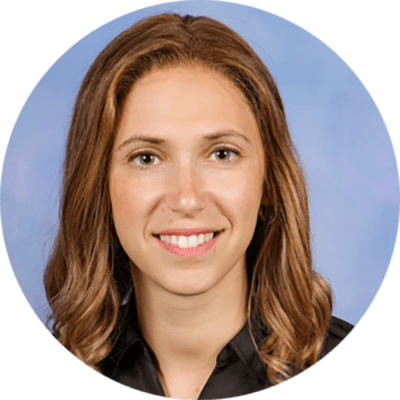
Outside the Box: A Values-Based Approach to Parashat Hashavua
Tanakh in dialogueWhat position does the Tanakh occupy in the life of an early teen? For many, the Tanakh resides in the mental box into which school is commonly placed—a box of academic pursuits, Hebrew language and grammar, Jewish history and Biblical knowledge. There is nothing innately wrong with this, to the contrary, Tanakh study certainly can and does involve these important elements. But a missed opportunity arises when compartmentalisation precludes Tanakh from forming dialogue with the other “boxes” that rise to prominence in the early teen years.Early teenagehood is often marked by questioning and exploration as students begin a journey of seeking to understand that which may have previously gone unquestioned.

Building Tanakh Skills One Step at a Time With Manipulative Materials
“Give a man a fish,” the saying goes, “and you feed him for a day. Teach a man to fish and you feed him for a lifetime.” At Netivot, we have developed a Tanakh program that gives each child the personalized gift of feeding himself for a lifetime. The Montessori method is predicated upon the idea that each child, if provided developmentally appropriate opportunities, will inherently learn and grow and master at each phase of development according to his own individual needs. For this reason, in our classrooms, the expectation is not for children to memorize translations of text “chorally,” but rather to develop individually the skills to translate for themselves. Using key elements of the Montessori method, our students build a series of skills that allow them to tackle pesukim independently.

Bringing Nechama Leibowitz Into the Classroom
The written legacy of Nechama Leibowitz, in her gilyonot and books, has served and continues to serve as the basis for Torah study for many serious students of parashat hashavua, Tanakh, and parshanut. Her teaching methodology, as experienced by one of the authors of this article in 1988-89, in her weekly classes in her apartment in Jerusalem and in her weekly shiur at the Gruss Kollel, served as a model for how to teach Torah. Certain elements have been adapted, but we have found that her principle of encouraging independent thinking and individualized feedback gives students in middle school a personal connection with the text and empowers them to continue in their Torah study with positivity and self- assurance.
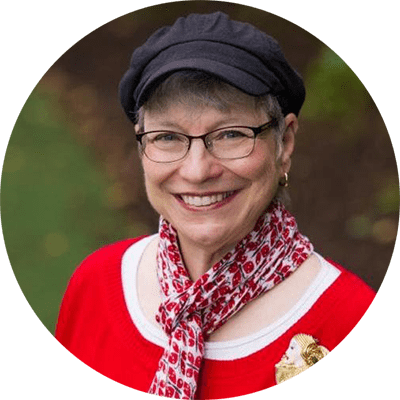
Opening the Middle School Window to Midrash
A number of years ago, when I was teaching the sections in Genesis about Abraham and Sarah to a girls’ middle school class, one of my students raised her hand and said, “I don’t like how much is missing in the Torah.” I asked her what she meant and she replied, thinking like a typical middle schooler, “Like, what did Abraham and Sarah talk about at night when they were just sitting around their tent?” After responding facetiously that Sarah probably asked Abraham what he thought about her new burka, I took the moment to answer the class seriously. This was a wonderful opportunity to deeply introduce my students to midrash as one way to fill in the “blanks” in the Torah text, to delve into the “spaces” in the text, and to teach us moral messages with which to inform our own lives.
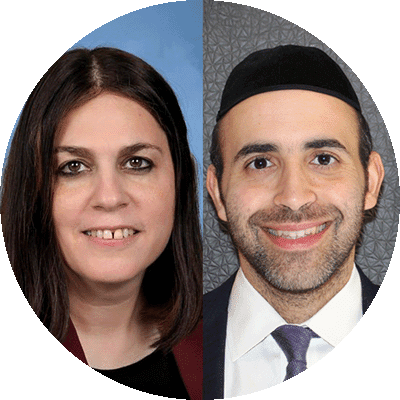
The Barkai Method for Teaching Humash
In the introduction to his book Who Knows Twelve, Rabbi Berel Wein explores a troubling phenomenon: the growing disconnect between the Jewish people and their sacred texts. Whatever the causes for its decline may have been, many Jewish day schools today are attempting to reinvigorate the study of Tanakh, recognizing its fundamental role in Jewish identity and education. Maimonides codified the necessity of studying Tanakh in Hilkhot Talmud Torah (1:7), asserting that it is a crucial component of Jewish life. Today, there is a growing recognition of the need to revive these ancient texts, which hold profound significance for Zionism, community, ethics, spirituality, identity, and much more. One noteworthy example of this revival is the Barkai educational system, developed in Israel by Rav Dan Be’eri more than 40 years ago.
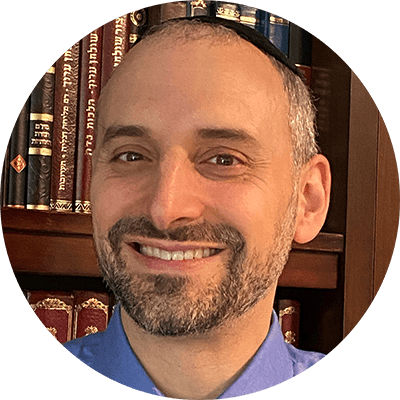
Introducing Sod Into the Tanakh Classroom
In my years of teaching Neviim and Ketuvim, one of my overarching goals was for students to gain an appreciation of why specific commentaries approached the same text differently. I spent significant time on both peshat and derash approaches, highlighting the strengths and weaknesses of each interpretation’s handling of textual issues. One experiment with introducing sod resonated deeply with some of the students and complemented the other work we were doing. I share that experiment here. Sod (literally, secret) is a mode of hermeneutical interpretation that sees the characters and storyline as being symbolic of fundamental themes. Although definitions of sod usually include mysticism, the relation to Kabbalah is only that sod reflects an interpretation that directly addresses giving insight into our relationship with God.

Heroes Within Reach
We read the Bible with the understanding that many of the characters described are our heroes, our Jewish archetypes. We pore over every action, every word, for insight into their thought and character, insight that can inform the same in us. These are not dry annals of the lives of figures from the distant past; these people are as alive today as we are—alive within us, within our synagogues and culture, because we study them so intensively and know them so intimately. Each of us knows the stories so well, that we know what happens between and behind the words.What is a Hero?But what does it mean to consider them heroes? In what sense does, or doesn’t, the Bible portray them as such? And more importantly, how does the Bible express what a hero is, and what makes someone heroic?
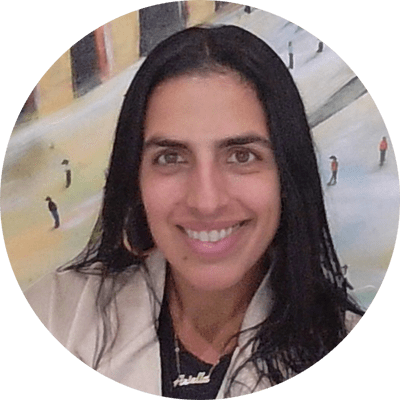
Tanakh as a Tool for Building Identity
Jewish tradition holds Torah teachers in high esteem, viewing them as more than just conveyors of knowledge. They are seen as spiritual and moral guides, shaping the character and identity of their students. In The Lonely Man of Faith, Rabbi Soloveitchik emphasizes that the role of the Torah teacher goes beyond intellectual instruction; they facilitate a divine encounter, guiding students toward a deeper connection with God. The Talmud (Bava Metzia 33a) elevates the honor due to a Torah teacher above even that of one’s parents, as the teacher introduces the student to the “world to come” through their instruction—a profound form of giving life. These texts paint a picture of the Torah teacher as a builder of Jewish identity, imparting values that help shape a student’s character and moral foundation.

Tanakh as Our Story
Tanakh is the story of the Jewish people. This basic component of our identity and our tradition has tremendous spiritual and educational power which, unfortunately, is often untapped. In the following essay, we aim to show how this idea of Tanakh as the grand narrative of the Jewish people can be developed into a powerful educational opportunity. In tapping into Tanakh’s central narrative feature, we are not merely making Tanakh more interesting for our students. Since the times of Moses, the Jewish people has known that a good story does more than just pique an audience’s interest. In the words of Rabbi Sacks, “The Israelites had not yet left Egypt, and yet already Moses was telling them how to tell the story. That is the extraordinary fact. Why so? Why this obsession with storytelling?
Reach 10,000 Jewish educational professionals. Advertise in the upcoming issue of Jewish Educational Leadership.







Do you feel this can work in פרשת כי תצא
Absolutely! One of the keys to understanding פ’ כי תצא is to realize that it is a commentary on the second half of ספר בראשית.